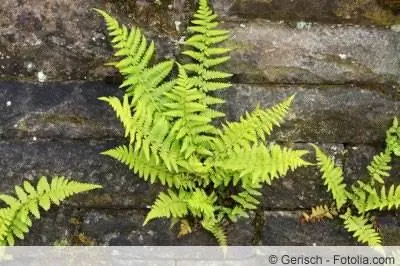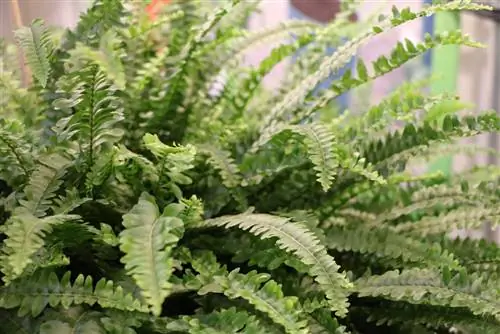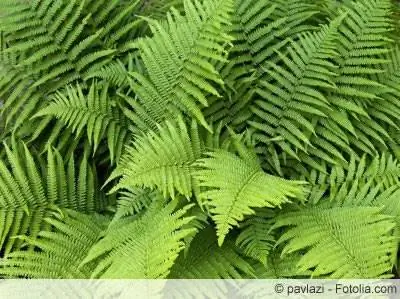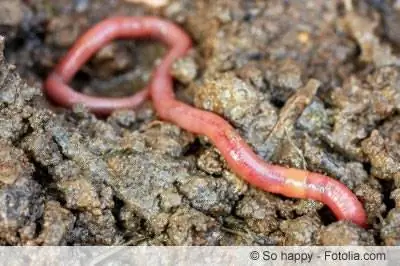- Author admin [email protected].
- Public 2023-12-17 03:39.
- Last modified 2025-01-24 12:45.
After the worm fern was used for purely medicinal reasons for a long time, it was also used as an ornamental plant in gardens and parks from the Victorian era onwards. If you would also like to decorate your garden with this incredibly fascinating plant, here you will find out everything you need to know about the worm fern in general and its care in particular.
Contrary to popular belief, the worm fern is not a specific type of fern, but actually an entire genus of plants that includes a good 280 species of worm ferns. The main distribution area of the worm fern genus (Bot. Dryopteris) is the northern hemisphere, in which around 150 of the above-mentioned species can be found naturally, predominantly in forests, on shady slopes and occasionally in open spaces. Ultimately, there is hardly a place on earth where no representative of the genus in question can be found. For example, the worm fern Dryopteris odontoloma is even native to the heights of the Himalayas, whereas the red worm fern (bot. Dryopteris erythrosora) thrives primarily in the warm, tropical Philippines and Dryopteris macropholis grows almost exclusively on the Marquesas Islands.
Name origin
The worm fern owes its name to certain substances in its roots that can paralyze intestinal parasites and were therefore often used in the form of root extracts to treat tapeworm infestations. However, since the substances in question are highly toxic and can even lead to death if used incorrectly, they are still used in exceptional cases today.
Known varieties
which thrive mainly in the northern hemisphere
- True worm fern or Dryopteris filix-mas (occurrence: Europe, Asia, North Africa, America)
- Chaff-scaled worm fern, golden scale fern or Dryopteris affinis (occurrence: Europe)
- Delicate thorn fern or Dryopteris expansa (occurrence: Europe)
- Comb fern or Dryopteris cristata (occurrence: Europe, Western Siberia, Canada, USA)
- Scree worm fern or Dryopteris oreades (occurrence: Europe and Caucasus)
- Rigid worm fern or Dryopteris villarii (occurrence: mountains of Europe, western Asia and northwest Africa)
- Common thorn fern, Carthusian fern or Dryopteris carthusiana (occurrence: Europe and Western Asia)
- Remote-feathered thorn fern, distant-feathered worm fern or Dryopteris remota (occurrence: Europe and Turkey)
- Broad-leaved thorn fern, broad worm fern or Dryopteris dilatata (occurrence: Europe, West and North Asia, North America, Greenland)
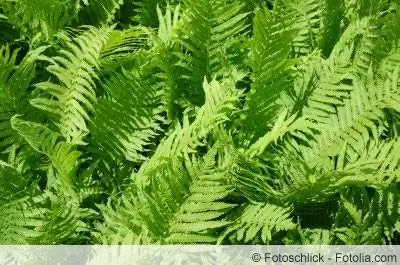
Lesser known varieties
which are more likely to be found far away from Central Europe
- Dryopteris aemula (Occurrence: Northern Spain, Azores, France, British Isles and Turkey)
- Dryopteris clintoniana (occurrence: USA and Canada)
- Dryopteris marginalis (occurrence: USA and Canada)
- Dryopteris goldieana or giant worm fern (occurrence: USA and Canada)
- Fragrant worm fern or Dryopteris fragrans (occurrence: North America, Asia, Greenland, northern Finland and northwestern Russia)
- Dryopteris hondoensis (Origin: Japan)
- Dryopteris sieboldii (occurrence: Japan and Taiwan)
- Dryopteris tokyoensis (occurrence: Japan and Korea)
- Dryopteris crassirhizoma (occurrence: Japan, Korea, Sakhalin and Manchuria)
- Dryopteris uniformis (occurrence: Japan, South Korea and China)
- Dryopteris dickinsii (occurrence: Japan and China)
- Dryopteris cycadina (occurrence: Japan and China)
- Red veil fern, red veil worm fern or Dryopteris erythrosora (occurrence: Japan, China, Taiwan, Korea and Philippines)
- Dryopteris atrata (occurrence: Japan, China, Taiwan and northern India)
- Dryopteris wallichiana (occurrence: China, Nepal, Myanmar and Pakistan)
- Dryopteris hirtipes (Occurrence: South China, Indochina, India, Himalayas, Sri Lanka, Malay Peninsula and Polynesia)
- Dryopteris stewartii (occurrence: China and Himalaya)
- Dryopteris odontoloma (location: Himalaya)
- Dryopteris sweetorum (location: Marquesas Islands)
- Dryopteris macropholis (location: Marquesas Islands)
Growth
Most worm ferns have a clump-like, spreading, upright habit. Their average height is around 1m, although there are varieties that can grow up to 1.5m and higher. The color of their evergreen fronds can range from light green to dark green depending on the variety, age and location. The main budding season is spring, when the worm fern can grow to an impressive size within a very short time.
Location
Although there may be variety-related differences in this regard, most worm fern species clearly prefer shady, partially shaded or even fully shaded locations. For this reason, at least the varieties native to this country can usually be found in the shade of large trees, walls or buildings, and bridges. When it comes to the soil, however, the fern proves to be very frugal or adaptable. Although it prefers slightly moist soil, it can also thrive in dry areas. However, it does not tolerate waterlogging very well, which is why the soil should be specifically drained when planting in the garden so that excess water can drain away optimally or seep away as quickly as possible. It may also be advisable to enrich the soil with some fresh compost or humus, although worm fern can also thrive wonderfully in very sandy or loamy soil. Under no circumstances should the soil be too calcareous.
Tip:
The lime content of soil can be determined very easily and quickly using appropriate test strips from the pharmacy or a well-stocked specialist plant and garden supply store.
Propagation

In the wild, the worm fern reproduces both through the branching of its rhizome and through its spores. However, it should first be pointed out that a real generational change only occurs through reproduction via spores. In addition, ferns must first mature over several years in order to be able to reproduce naturally. This means that targeted propagation of sufficiently old ferns using their spores would be possible, but unfortunately not very promising. It is therefore advisable to propagate the worm fern in the garden by properly dividing its roots. One advantage of root division is that even young fern plants can be propagated very easily this way. In addition, the offshoots can be planted specifically at a specific location.
If you want to propagate your worm fern in the garden by dividing the roots, you must first expose part of the root system. Then the roots are divided with a sharp knife or suitable scissors. It is important that the separated root part, which is to be replanted for propagation, has at least two, and preferably three, fern fronds of its own. In order to ensure that the “mother plant” does not suffer too much damage, no more of its roots should be removed than is absolutely necessary.
Attention:
Because worm fern is poisonous, gloves should always be worn when planting, transplanting, root cutting and cutting the fronds.
Planting
Worm fern can be planted individually, as a solitary plant, in so-called tuffs, as a group or in a border. If the fern is planted together with or in addition to other plants, a planting distance of at least 60 or even 80 cm should be maintained. Although the young fern plants still appear very delicate, it should be remembered that they can grow very large very quickly. The best time to plant is either in spring, before the young seedlings begin to sprout, or in late summer.
Planting explained step by step
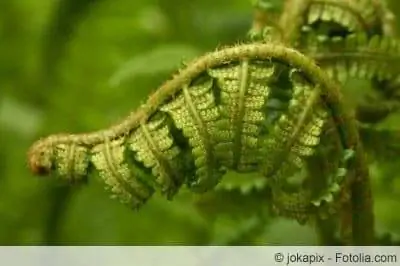
First, the planting hole is dug, which should be approximately twice as large as the root ball. Then the hole is half filled with loose soil, which can be enriched in advance with a little compost or humus if necessary. The loose water should then be watered until it is slightly muddy. Now the seedling can be placed in the hole. Once this is done, the hole is filled with more soil, which should then be gently pressed down.
Frequently asked questions
Can you transplant worm fern?
While young plants can be transplanted safely, it is recommended to leave older ferns where they are. If this is not possible, the roots should be properly divided when transplanting, as your worm fern may no longer grow properly.
Does worm fern need to be watered?
No, worm fern does not need to be watered. In fact, experts even expressly advise against watering because, on the one hand, worm ferns cannot tolerate waterlogging and, on the other hand, a lack of water forces them to form stronger roots.
How can I find out whether my worm fern is an “original form” or a breeding?
Depending on the variety, an exact determination is unfortunately only possible through a spore analysis.

